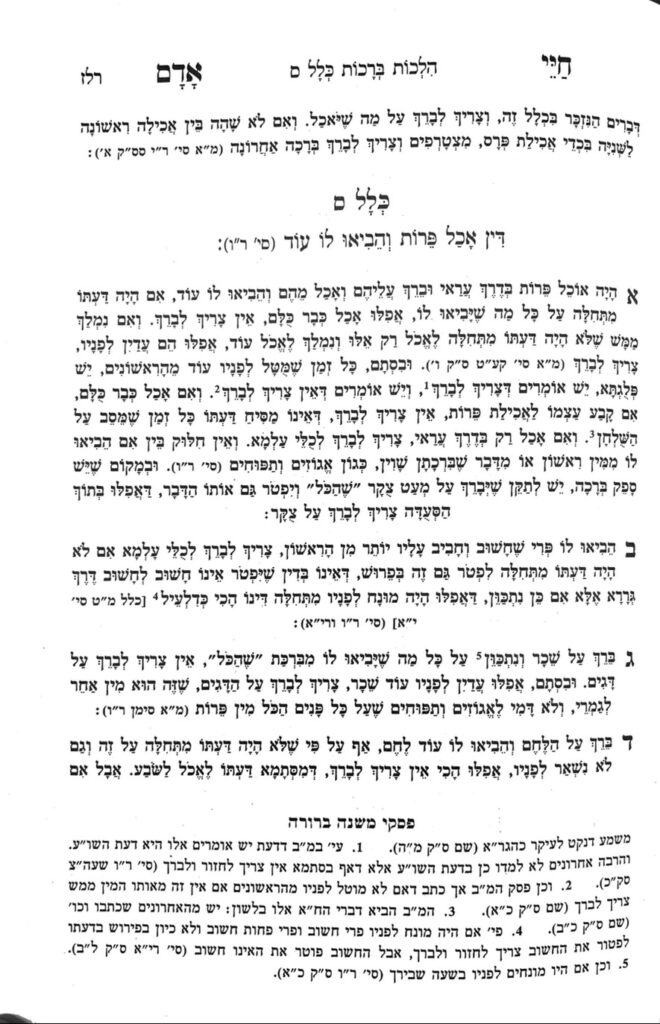We are beginning siman 1. We have learned (shiur 1159) that there are five types of intent one can have at the time of their bracha:
- to eat a specific number of foods
- Intent to eat as much as possible
- Stam daas
- Koveah/k’vius to eat
- “Outsourced” daas
Today, the Chayei Adam will discuss the first three of these types.
The Chayei Adam begins with a scenario in which one is eating fruits in an non-settled manner, but specifically without a limit on the amount which they plan to eat. I.e., he had active daas at the beginning of the session to eat as much as he wanted. In this case, since one had daas to cover everything brought out, he does not need a new bracha, even if the new fruits were brought out after he finished everything present at the time of the bracha. This is the second type of daas we discussed above.
On the other extreme, the Chayei Adam discusses a case in which one decided they were finished eating, or they explicitly had in mind at the beginning of their eating session to only eat a specific amount, and then were nimlach that they wish to eat more. Even if there is still food remaining on the table, they would need a new bracha in order to eat again. This is the first type of daas we discussed above. This case and the previous case are the two extremes of daas regarding our klal.
Next, the Chayei Adam discusses stam daas, where the person does not have any particular intent. In this case, we factor in other considerations. One consideration is whether there is still fruit from the time of the bracha leftover on the table. The Chayei Adam writes that it is a machlokes whether new fruits brought to the table would be covered by extension of the fruits left on the table. The opinion that it works argues as long as the fruit is still there, the eating session has not ended, and therefore no ne bracha is needed. The Mishnah Berurah paskens that one does not need to make a new bracha on new fruits brought, provided that the new fruit brought is the same as the food which is on the table (e.g., new oranges are brought to the table in addition to the oranges currently on the table)
We will discuss other considerations in upcoming shiurim, be’ezras Hashem.
Summary
- If one has daas to eat whatever is brought out to them, they do not need to make a new bracha on foods brought out after their bracha, even if there is nothing left on the table which was present at the time of the bracha.
- If one is finished eating or they explicitly had in mind at the beginning of their eating session to only eat a specific amount and then decides to eat more (nimlach), they need to make a new bracha, even if there is still food remaining on the table which was present at the time of the bracha.
- If one did not have any particular daas (i.e., stam daas), we look at other considerations. One consideration is whether there is still fruit leftover on the table which was present at the time of the bracha. The Mishnah Berurah paskens that if the new fruit brought is the same as the fruits which are currently on the table, one does not need to make a new bracha.
To listen too Shiurim on the Yamim Noraim please click here



